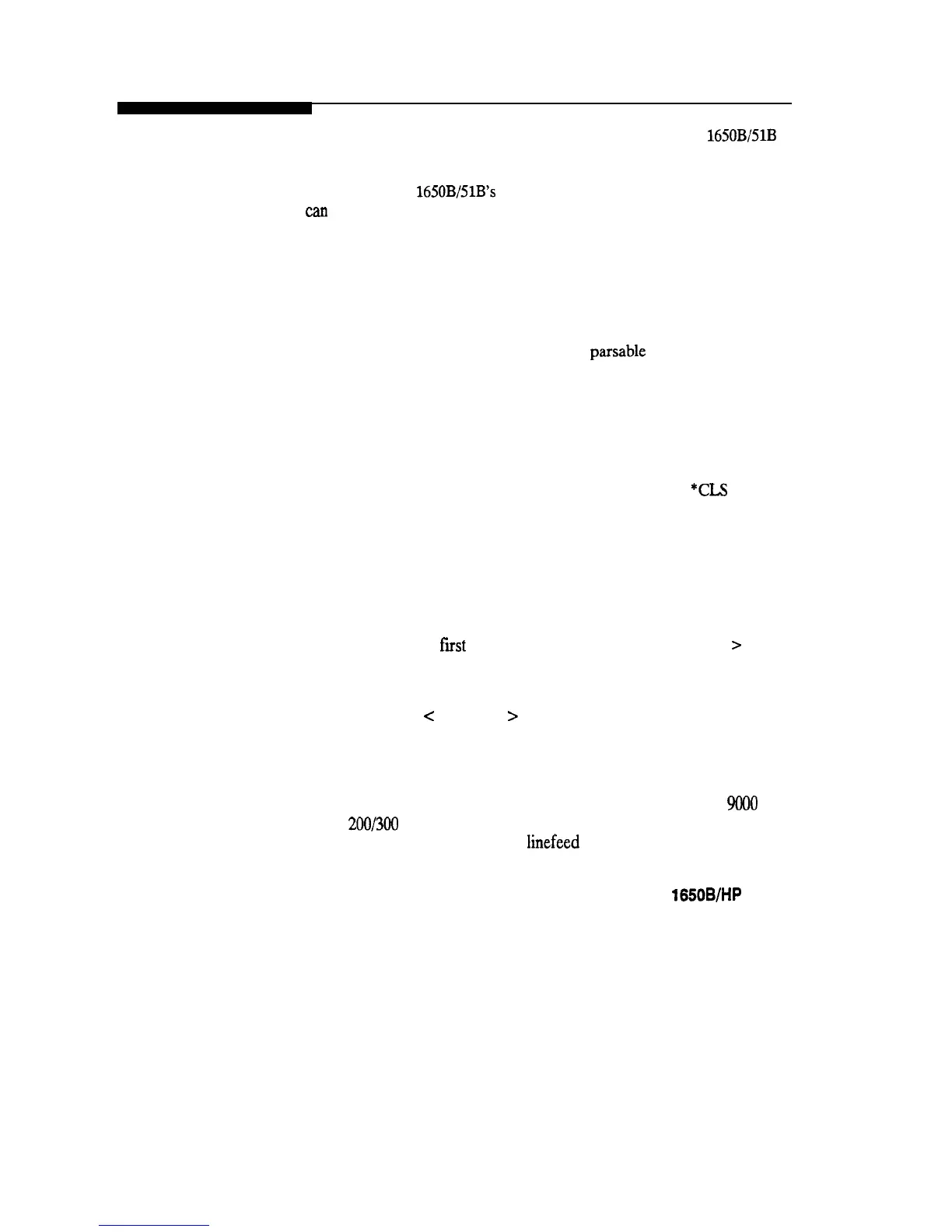The Command
The command tree (figure 4-l) shows all commands in the HP 1650B/51B
Tree
logic analyzers and the relationship of the commands to each other.
Parameters are not shown in this figure. The command tree allows you to
see what the HP
1650B/51B’s
parser expects to receive. All legal headers
can be created by traversing down the tree, adding keywords until the end
of a branch has been reached.
Command Types
As shown in chapter l’s “Header Types” section, there are three types of
headers. Each header has a corresponding command type. This section
shows how they relate to the command tree.
System Commands.
The system commands reside at the top level of the
command tree. These commands are always
parsable
if they occur at the
beginning of a program message, or are preceded by a colon. START and
STOP are examples of system commands.
Subsystem Commands. Subsystem commands are grouped together
under a common node of the tree, such as the MMEMORY commands.
Common Commands. Common commands are independent of the tree,
and do not affect the position of the parser within the tree. *CLS
and
*RST are examples of common commands.
Tree Traversal Rules
Command headers are created by traversing down the command tree. For
each group of keywords not separated by a branch, one keyword must be
selected. As shown
on
the tree, branches are always preceded by colons.
Do not add spaces around the colons. The following two rules apply to
traversing the tree:
A leading colon (the
frost
character of a header) or a <terminator
>
places the parser at the root of the command tree.
Executing a subsystem command places you in that subsystem (until a
leading colon or a
<
terminator
>
is found). The parser will stay at the
colon above the keyword where the last header terminated. Any
command below that point can be sent within the current program
message without sending the keywords(s) which appear above them.
Examples
The following examples are written using HP BASIC 4.0 on a HP
!XlOO
Series 200/300 Controller. The quoted string is placed on the bus,
followed by a carriage return and
linefeed
(CRLF).
Programming and Documentation Conventions
HP 1650B/HP
16518
4-4 Programming Reference

